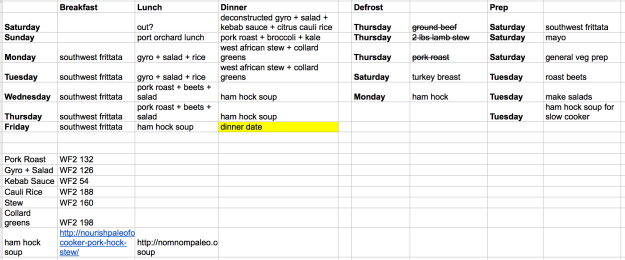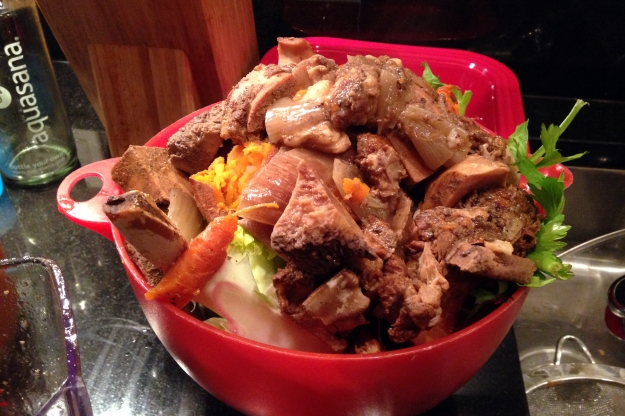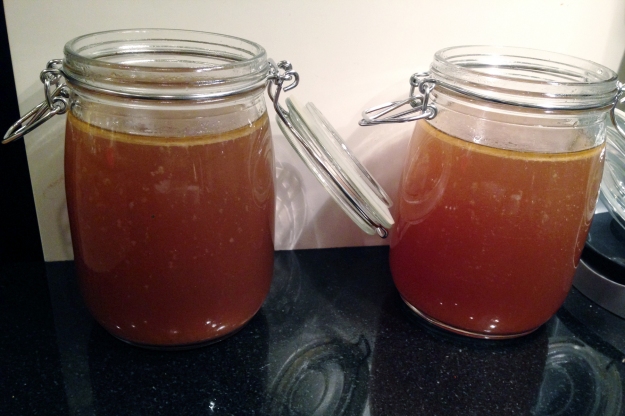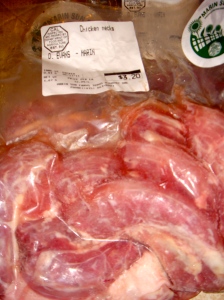 I’m really excited for this week’s menu. I broke one of my own rules and every recipe is new to me. But, I was really reasonable about timing (the bulk will be made over the weekend / on a day off from work) and they all are quick prep plus longer cook time recipes. I rarely stick to my meal plan exactly, but if I do it will be five recipes from Well Fed 2 in one week, plus a sixth I’ve made before (the kebab sauce).
I’m really excited for this week’s menu. I broke one of my own rules and every recipe is new to me. But, I was really reasonable about timing (the bulk will be made over the weekend / on a day off from work) and they all are quick prep plus longer cook time recipes. I rarely stick to my meal plan exactly, but if I do it will be five recipes from Well Fed 2 in one week, plus a sixth I’ve made before (the kebab sauce).
This is a happy week where a bunch of the WF2 recipes are available online, but for those that aren’t page numbers from WF2 listed in picture.
- Pork Roast – slightly different from recipe, but very close; I’m planning to do the Middle Eastern variation listed in the cookbook
- Lamb gyro salad + kebab sauce
- West African Stew – slightly adapted from the original recipe; I’ll be making it with a turkey breast I need to use but hoping it still works out well
- Ham hock soup – I’ll probably do a combo of these two recipes with whatever veggies I have on hand (1, 2)
I’ve been prepping food on the weekends for the week ahead probably for about two years. I go in spurts with how much effort I put in, but I can say for sure that the more prep I do on the weekend the healthier we eat during the week and getting meals on the table (or counter / desk / couch) is that much easier.
Prepping (for me) is all about setting myself up the best I can to make the decision to eat a healthy, tasty, homemade meal versus calling for take-out. Considering I have to make this decision 21 times every week, the more work that’s done in advance the more likely I am to choose well.
Here’s a somewhat random list of what I’ve found to be helpful for me.
1. Any prep is better than no prep. Seriously. If you have only 10 or 15 minutes, brown some ground meat to make a very quick meal one night. While the meat’s browning, cut up a veggie to cook later in the week. I find prepped veggies speak to me after work whereas unprepped veggies find themselves in the compost bin at the end of a busy week. Also, prep doesn’t have to be done all at once. Sometimes I set aside a few hours on Sunday but more often than not I do a little prep each time I’m in the kitchen over the weekend.
2. Start with a clean kitchen. I do not start prepping until the kitchen is clean and the dishwasher is unloaded, especially if I’m doing a big prep session. This ensures prepping food doesn’t require a two hour cleaning session.
3. Have multiples of common kitchen gadgets. Because I do the bulk of my cooking at one time, I find it helps to have several of a few key items. I have two sets of measuring cups and three sets of measuring spoons. I have several chefs knives (and use one for meat, one for non-meat). I have three of four cutting boards. Not having to stop and clean a meat filled cutting board and knife before moving on to veggies keeps me in my cooking groove.
4. Have a compost bowl out on the counter. We are required to compost in Seattle, but even if you don’t have to or want to, keeping a bowl for all your scraps on the counter is much more efficient than going into the trash can every few minutes. It also helps contain the mess. I have big plastic IKEA bowls that work great. I’ve also used plastic bags from veggies, but I like that the bowls don’t have to be opened each time I want to throw more peels in. Once it’s filled Greg takes it out to the compost for me and brings it back in.
5. Have a defrost bowl in the fridge + start defrosting early. My meat is all wrapped in plastic with paper from the butcher, which means it drips as it defrosts. To keep messes in the fridge to a minimum, all my meat defrosts in a bowl that I can change out regularly to clean. As soon as you know what you are going to cook, put it in the fridge. It’s annoying when you find yourself with a few minutes to prep something and frozen meat.
6. Don’t cook too far in advance. I’ve made the mistake of cooking all my veggies on Sunday. Opening my lunch on Thursday at work with veggies that were roasted five days ago is only going to have me tossing my lunch and buying something instead. Prep veggies (wash, peel, cut) early, but I try to cook them no more than three days in advance.
7. Store by serving (and stock up on storage!). If there’s a meal already packaged in the fridge with meat + veggies, I’m that much more likely to go for it. Instead of storing 4 meals worth of chili in a big container, I’m more likely to store 4 individual chili servings because I know it works better for me. When I need to make my lunch, it is so much easier to grab the chili plus two veggies than it is to portion out each item into a new container. We have tons of two cup glass containers and a few LunchBots. I also save good sized glass jars and we have a few plastic containers I’ve picked up here and there.
8. Do something now that will help you later. A few nights ago I realized I didn’t have breakfast for the next morning. I’m currently working on bringing my breakfast to work every day, so I hard boiled eggs way later than I wanted to. At first I only wanted to peel three for my breakfast the next day. But I was already there, peeling the other six would only take 2 minutes tops and would save me the hassle for two more breakfasts. Finish the job if it’s going to make your life easier in a day or two. (Says the girl who drove by three gas stations today with the tank on empty but 21 more miles in range…)
I kept track of how my prep went for this coming week. Every week is a little different, but here’s the run down:
Thursday
- ~1 hour to meal plan and defrost meat
- 5 minutes to start bone broth in the crockpot
Friday
- 20 minutes at lunchtime to walk and grab groceries (I realize that because I “shop” my chest freeze and have a CSA deliver most of my veggies my shopping time is really minimal)
- 5 minutes to swap out half the bone broth (and strain and bottle it) with fresh water
Saturday
- 10 minutes to make mayo
- 20 minutes to prep the southwest frittata and cut/wrap in foil once it finished baking
- 20 minutes to prep veggies (wash and cut a head of lettuce, peel and chop a pound of beets and a turnip)
- 10 minutes to strain and bottle the bone broth
- 5 minutes to prep the pork roast and toss it in the crockpot to cook overnight
Sunday
- 10 minutes to shred the pork roast and toss it in the fridge for dinner
I made meals as well to eat (lunch and dinner Saturday, dinner Sunday) but I don’t really count those as prepping food for future use since we’re eating them once they are ready.
Happy cooking! Any good prep tips for me? Leave ’em in the comments.








